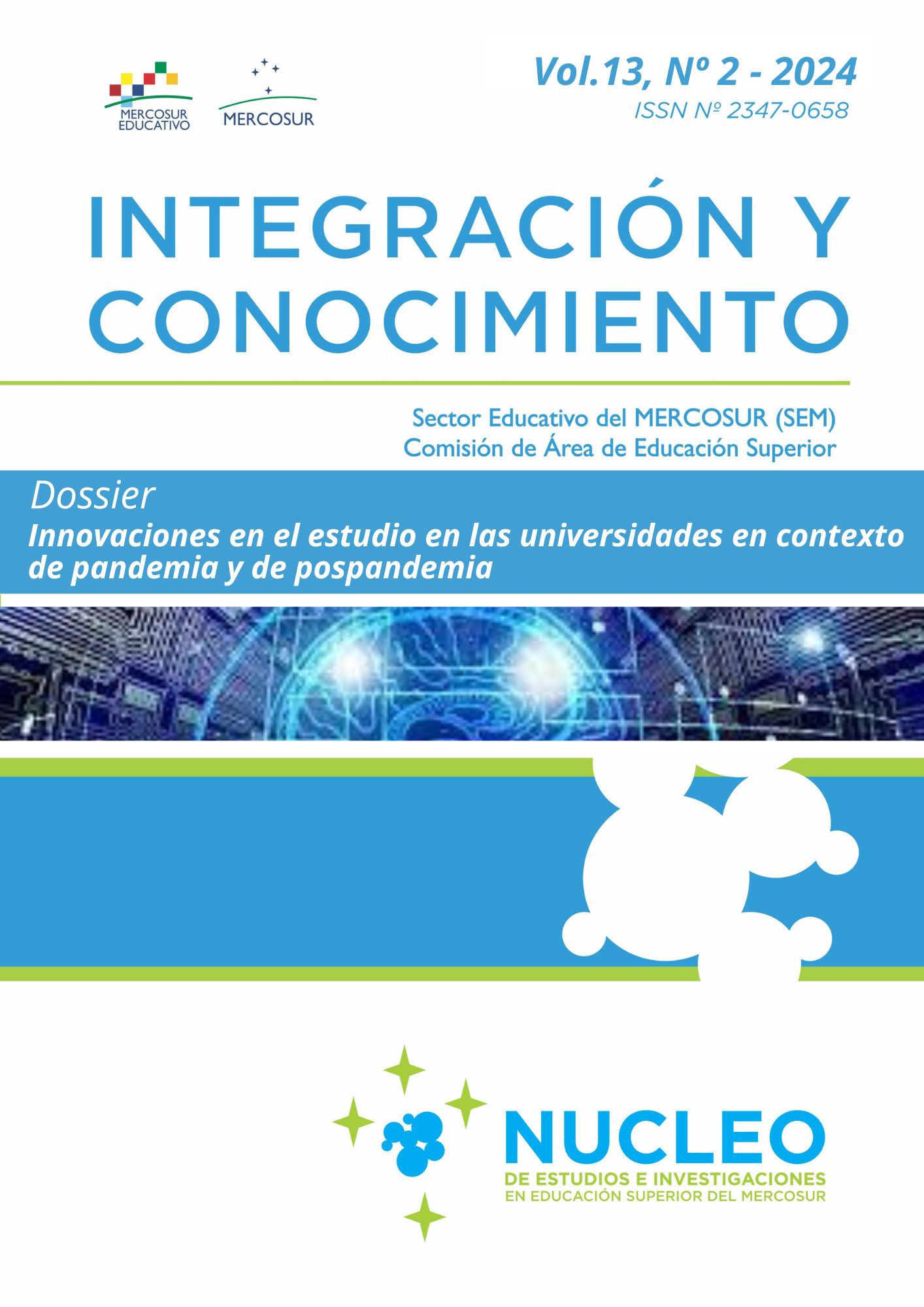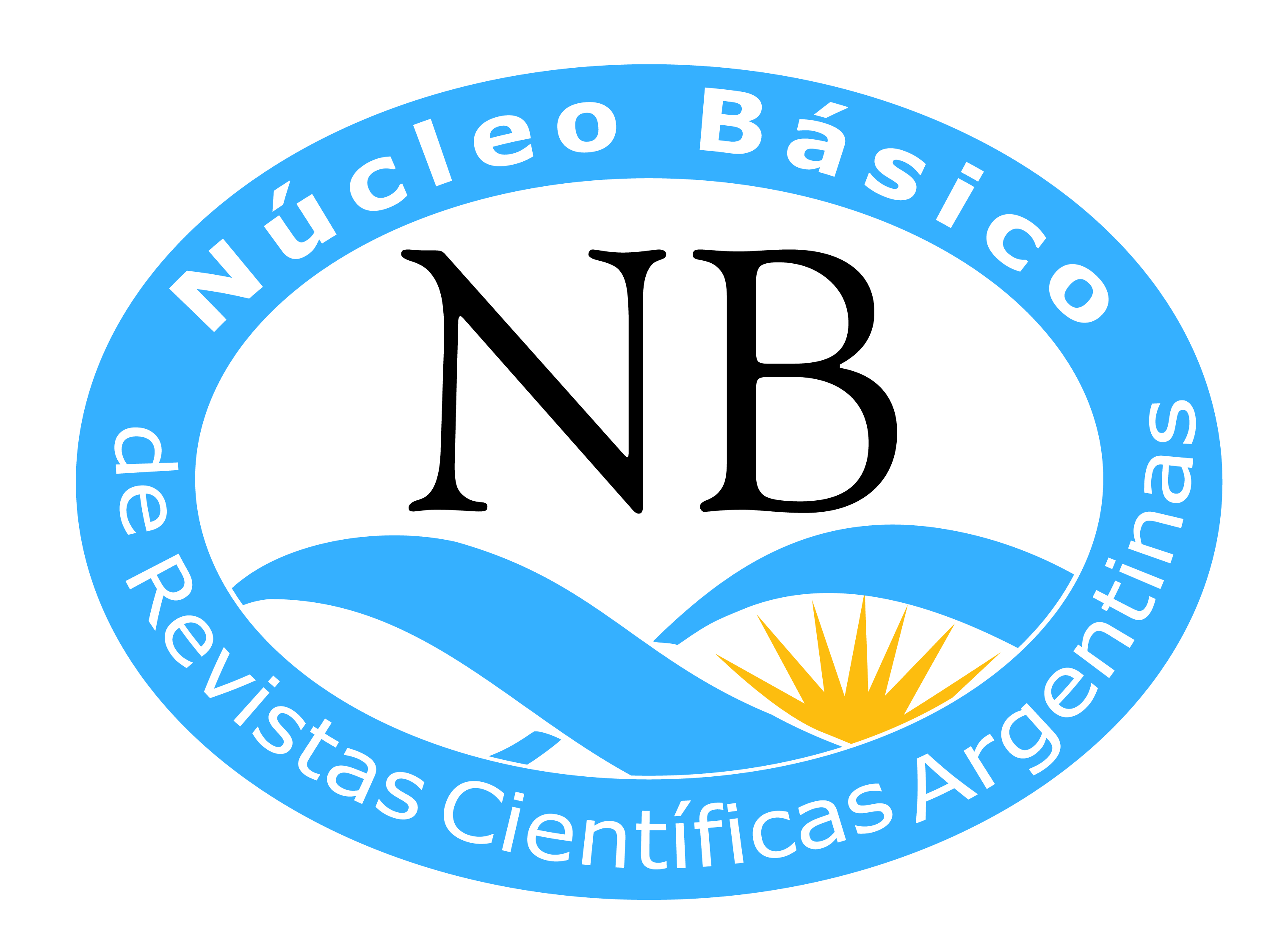Respuesta científica-tecnológica de las universidades frente al COVID-19
Keywords:
University. COVID-19. Science and TechnologyAbstract
The article analyzes the scientific and technological research of some of the universities of the Buenos Aires suburbs in Argentina. Make a comparison about its activities during the pandemic from 2020 to 2021. He considers important that the public university continues and intensifies its role in scientific development and brings closer the opinions of researchers on the need for the country to enter the stage of the fourth revolution in Science and Technology.
Downloads
References
Arias, M., Cambours, A. y Lastra, K. (2021) Pandemia y universidades: dificultades y respuestas en el Conurbano Bonaerense. Revista Educación Superior y Sociedad. 33 (2), 156-179.
Cuesta González, A. (2020). Universidad, innovación y desarrollo. RELAPAE, (12), 97-112.
Etzkowitz, H. & Leydesdorff, L. (1995). The Triple Helix -- University-Industry-Government Relations: A Laboratory for Knowledge Based Economic Development. EASST Review, 14 (1), 14-19.
González, G. (2021). La implementación de iniciativas tecnológicas en las universidades de la Argentina frente a la 124 COVID-19. Revista Educación Superior y Sociedad. 33 (2), 124-155.
Hurtado, D. (28/2020/ 12). El salto que queremos dar es importante. Recuperado de: https://www.agenciatss.com.ar/diego-hurtado-el-salto-que-queremos-dar-es-importante/
Otero, A., Corica, A. y Merbilhaá, J. (2018). Las universidades del conurbano bonaerense: influencias y contexto. Archivos de Ciencias de la Educación, 12 (14), e052. https://doi.org/10.24215/23468866e052
Panizzon, M., Furlan da Costa, C. & Baptista de Oliveira Medeiros, I. (2020) Federal university practices to combat COVID-19: the relationship between public investment and implementation capacity. Brazilian Journal of Public Administration 54(4), 635-649.
Román, V. (4 de agosto de 2021) La ANMAT aprobó el primer recubrimiento nanotecnológico para prevenir infecciones en hospitales, lugares de trabajos y transporte. INFOBAE. Recuperado de: https://www.infobae.com/salud/ciencia/2021/08/04/la-anmat-aprobo-el-primer-recubrimiento-nanotecnologico-para-prevenir-infecciones-en-hospitales-lugares-de-trabajos-y-transporte/.
Sábato, J. y Botana, N. (1968). La ciencia y la tecnología en el desarrollo futuro de América Latina. Revista de la Integración, (3), 15-36.
Sabato, J. A. (comp.) (2011). El pensamiento latinoamericano en la problemática ciencia-tecnología-desarrollo-dependencia. PLACTED Buenos Aires, Argentina. Ediciones Biblioteca Nacional.
Schwab, K. (2020). La Cuarta Revolución Industrial (P. Gayozzo y F. López de Pomar Trad.). Futuro Hoy. 1(1), 6-10. DOI: https://doi.org/10.52749/fh.v1i1.
UNTREF (20 de julio de 2020) La UNTREF desarrolla equipamiento hospitalario para contener la pandemia. Recuperado de: https//La UNTREF desarrolla equipamiento hospitalario para contener la pandemia - MUNDO UNTREF
UNTREF (21 de diciembre de 2020) En pandemia: Se realizaron seis proyectos para la lucha contra el coronavirus. Recuperado de: https://untref.edu.ar/mundountref/proyectos- lucha-contra-covid-19
Zamponi, A. (22 de diciembre de 2020) La ANMAT probó el suero hiperinmune anti covid-19. Noticias UNSAM. Recuperado de: http://noticias. unsam.edu.ar /2020/12/22/ la ANMAT aprobó el Suero Hiperinmune anti- covid-19 /
Wee, C. y Monarca, H. (2019). Educación Superior en contextos de cuasi mercados. Educación XX1, 22(1), 117-138.
Za Grossi, G. (2013). Las universidades del conurbano bonaerense. Impactos, desafíos y perspectivas. Ponencia presentada en Jornadas de Sociologia de la Facultad de Ciencias Políticas y Sociales. Universidad Nacional de Cuyo.
Downloads
Published
Issue
Section
License
Copyright (c) 2024 Integración y Conocimiento

This work is licensed under a Creative Commons Attribution-NonCommercial-ShareAlike 4.0 International License.
Authors who have publications with this journal accept the following terms:
a. Authors shall retain their copyright and guarantee the journal the right of first publication of their work, which shall simultaneously be subject to the Creative Commons License of Recognition which allows third parties to share the work as long as its author is indicated and its first publication is this journal.
b. Authors may adopt other non-exclusive licensing agreements for the distribution of the published version of the work (e.g., depositing it in an institutional telematic archive or publishing it in a monographic volume) provided that the initial publication in this journal is indicated.
c. Authors are allowed and encouraged to disseminate their work via the Internet (e.g. in institutional telematic archives or on their website) after publication of the article, which may lead to interesting exchanges and increased citations of the published work. (See The Effect of Open Access).



